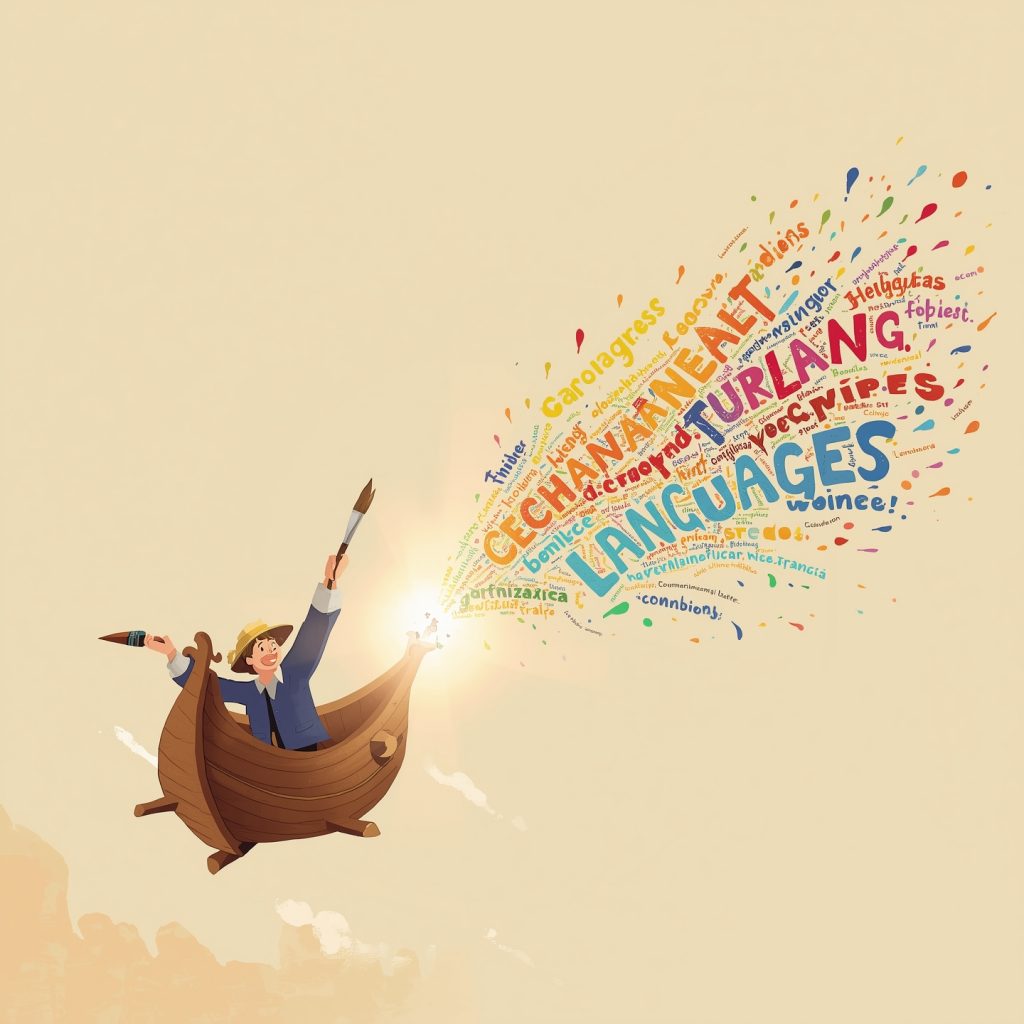~ How „mixing colors“ can make learning a foreign language as intuitive as speaking your native tongue

There are endless Blogs on language learning that tell you to do spaced repetition to memorize new vocabulary.
But they all miss one truth: You already speak every language.
Let me explain:
Remember how in art class you would mix say yellow and blue to get green?
You didn’t magically pull a new color into existence.
You just mixed two already existing colors into a new one!
I figured you could do the same with languages;
Take a look at this german exam question I read the other day:
„Inwiefern hat die Erfindung des Internets unseren Alltag verändert?“
Now the translator says „Inwiefern“ means „to what extent“.
So the question would be interpreted as:
„To what extent has the invention of the internet influenced our everyday life?“
But something felt off about that translation;
It didn‘t seem quite complete;
There was another color hiding in there!
And after some thinking, I saw it: „In what sense?“
So I figured the german „inwiefern“ is mixed together
by two english colors I already knew:
- „in what sense?“
- and „to what extent?“
Put that together and you get a complete and accurate translation of that german exam question:
„In what sense and to what extent has the invention of the internet influenced our everyday life?“
That made much more sense!
And since that clicked I remember that german word till this day
without ever having memorized it!
The Chinese You Already Understand
Here‘s a chinese word I thought I knew: 以为 ( yǐwéi )
The translator says it means „to think“ or „to assume“,
but again it felt like there was something incomplete about that translation.
Then, just as I was thinking about this word,
I overheard two of my chinese friends talking,
one realizing that we were out of fish:
啊,我们没鱼了。我以为我们晚饭可以做鱼。
(Ā, wǒmen méi yú le. Wǒ yǐwéi wǒmen wǎnfàn kěyǐ zuò yú.)
Translating to:
„Oh, We don‘t have any fish left. And I thought we could make fish for dinner!“
Now, I knew 以为 meant „to think“.
But listening to how they used it, I caught a subtle distinction I’d missed.
They weren’t just saying „I thought.“
They were realizing that their assumption had turned out to be wrong;
They thought they had fish for dinner,
but that assumption turned out to be wrong once they realized there was no fish left!
English would need several words to capture that nuance:
„I had assumed, but was mistaken.“
Chinese just had one: 以为 ( yǐwéi )
Two familiar concepts, assumption and being wrong,
packaged into one elegant expression.
The Spanish You’ve Always Known
„Paraguas“ is the spanish word for umbrella.
Now that word just seems like a bunch of letters smushed together,
but it actually consists of two familiar ideas:
„Para“ means „to stop“
and „Aguas“ means „Rain“:
So the thing that stops rain is an umbrella!
Once that clicked, it stuck!
I never forgot that word since!
Takeaway: How to Access the Languages You Already Know
Languages might seem very different at first glance,
but in any language I‘ve encountered there always was:
- words that already consist of multiple components (e.g. Paraguas = Para + Aguas)
- or words you can break into multiple familiar ideas yourself, like:
- „Inwiefern“ = „in what sense“ + „to what extent“
- 以为 ( yǐwéi ) = „to assume“ + „to be mistaken“
So next time you encounter a „foreign“ word or expression that seems impossible to memorize, don’t ask „How do I fit this into my memory?“.
Ask: „Which existing colors are being mixed here? What familiar experiences, feelings, ideas are being fused?“
Most of the time, you’ll realize you know exactly what they’re talking about.
You just never had that specific label for it.
And that‘s the beauty of learning languages;
Finally discovering a label for an idea, an experience, a feeling
you‘ve had your whole life but never found the words for
in your language to express!
So now go out there and listen to natives speak;
in podcasts about topics you’e interested in,
in YouTube videos,
in movies of your choice,
in conversations you overhear,
…
-> Don’t focus on the words themselves;
Focus on the situations, the emotions, the ideas being expressed.
The colors being mixed in speech.
You’ll start recognizing familiar patterns everywhere.
Because the human experience isn’t foreign.
Only the expression of it is different.
So if you ever feel stuck on a language, remember that you already speak the most universal language of them all: Human experience.
That’s the language you’ve been fluent in your whole life.
And every other language is just a different dialect
of that same universal tongue!
At the end of the day,
all languages have the same colors to begin with;
They just mix them and paint with them differently 😉
This color-mixing approach completely transformed how I see languages:
What started as curiosity about one German word became a systematic method that works everywhere I’ve tried it.
So I started collecting these patterns;
Every breakthrough, every moment when a „foreign“ word suddenly revealed the familiar colors hiding inside it.
I’ve documented every color combination I’ve discovered across 7 languages in this eBook – 60+ detailed examples that show you exactly how to mix the colors you already know to understand any language you encounter.
Because here’s what I discovered: recognition is just the beginning. Once you learn to see familiar colors mixed in new ways, languages stop feeling foreign and start feeling like home.
The real adventure starts when you realize that every language is just teaching you new ways to paint with colors you’ve always had.
Thanks for reading!
I’d love to hear about your own color-mixing discoveries
as well as any thoughts or questions you may have on this method in the comments below!
